Preview
This August issue reminds you that it’s time to register for this year’s Annual Fall Workshop, coming up on November 3, and provides a look at the themes Cynthia Bourgeault will be exploring that day. It’s not too early to register – the workshop is now less than three months away and more than 200 people have already signed up to attend. Please register soon so you won’t be left out.
We also include a personal reflection from Al Krema on maintaining contemplative consciousness and balance amid the distractions and disturbances of the current era. We share information about a number of other upcoming events and retreats in the Chicago area and further afield. This month’s Insights come from Marianne Williamson, Krista Tippett, Lama Tsultrim Allione, and Wayne Dyer.
This issue also offers the fifth chapter of Phil Jackson’s Spirit in the Wild – a ongoing journal of Phil’s solo wilderness journey in the High Sierras last year.
Please let us know what you think about Spirit Journal – and start your side of the conversation – by emailing the editor at the address provided at the end of the newsletter. We look forward to hearing from you!
 Advance Registration Continues for Our Seventh Annual One-Day Fall Workshop November 3 in Lisle!
Advance Registration Continues for Our Seventh Annual One-Day Fall Workshop November 3 in Lisle!
This Year’s Fall Workshop Features Cynthia Bourgeault. Her Focus: How Wisdom Work Can Help Extend and Deepen Our Transformation in Centering Prayer
Sign up now to take advantage of Advance Registration pricing. You may register online or download and print this mail-in form.
This year’s Fall Workshop will bring renowned author and teacher Cynthia Bourgeault to Benedictine University in Lisle to offer a full day of wisdom teachings.The Workshop will explore Christian Wisdom as Prophecy: An ongoing conversation between Centering Prayer and Wisdom tradition.
The Wisdom tradition as taught by Cynthia references practices learned and developed over many centuries that include recognition and utilization of our entire being and not simply rational thought. Wisdom teaches that perception and awareness are unitive experiences, not merely thought processes.
Centering Prayer is a core element of the Wisdom tradition — it teaches us to release the thinking mind’s dominance over us. Thought will grip on to fear and cling to imagined desiring. The Wisdom tradition offers effective means to help us release our thoughts, so that we can simply rest in the presence of the divine nature dwelling in each of us. Wisdom practices cultivate an openness to presence, gradually enabling deeper levels of contemplation in centering prayer.
The Wisdom tradition also helps develop deeper awareness and higher levels of being outside of meditation time. During daily activity we engage practices to continually return to the awareness of our whole being, again releasing the dominance of the rational mind. These practices help develop a more constant contemplative approach to life when one isn’t meditating.
This is the Wisdom tradition’s link to the Welcoming Prayer. We will explore wisdom work as a training program that helps a person achieve and maintain the attitude Thomas Keating calls “welcoming receptivity,” which invites God to proceed with the process of transformation.
Looking ahead in a prophetic way, following our experiences with our whole being, we look to engage our oneness with all of humanity. Wisdom can help us move from an individual experience of the divine nature within, to an experience that we are all in union with each other and can communally experience our common divine nature embedded within us.
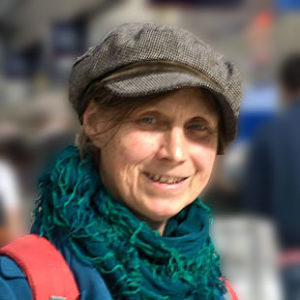 About Cynthia Bourgeault
About Cynthia Bourgeault
The Rev. Dr. Cynthia Bourgeault is a modern-day mystic, Episcopal priest, writer, and internationally known retreat leader.
Cynthia divides her time between solitude at her seaside hermitage in Maine and a demanding schedule traveling globally to teach and spread the recovery of the Christian contemplative and Wisdom path. She has been a long-time advocate of the meditative practice of Centering Prayer and has worked closely with Thomas Keating. For more information about Cynthia’s ideas and her many books, visit her website.
Distraction, Contemplation, and Peace
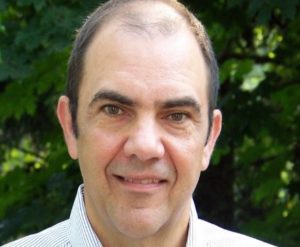 by Alan Krema
by Alan Krema
I have very frequent conversations these days with people in my centering prayer groups and other contemplative circles about how difficult it is to maintain a sense of peace and equanimity in our current social climate, with all the news going on that stirs up our emotions. I will offer here a few thoughts to consider in response to this situation, including some of my own ideas and some suggestions from Krista Tippett, and I would be interested to know your reactions.
First of all, we have to consider our calling to commit ourselves to silence and meditation on a regular daily schedule. Our method of centering prayer allows for distractions to flow by in our thoughts, and the work is to not grab on to them. We develop the muscle of continual release and openness to the presence and action of the Holy Spirit.
Living a lifestyle intentionally open to see the divine in all things is difficult enough given our normal cultural levels of stimulation and attractions. We need the regular routines of daily prayer and meditation to hold ourselves in the larger space of deeper meaning and higher being. The addition of the constant pulls of moral challenges in our public discussion can really destabilize us.
Yet we are called through the regular practice of centering prayer to a different perceptual agency. Our intention is to open ourselves through an intentional “unknowing” that can allow a different path for us to engage the world we find ourselves in. It is a way to see others and the world as a whole, with love and compassion.
Upcoming Events, Retreats, and Conferences
Here are some upcoming contemplative activities that may be of interest:
Ongoing Centering Prayer “11th Step” Programs in Northfield and Chicago
In AA 12-step programs, the 11th step is making a personal effort to get in touch with a Higher Power, however one understands it. Increasingly, people in 12-Step programs are deepening their
relationships with their Higher Power using the method of Centering Prayer.
Here in the Chicago area, two new Centering Prayer-based 11th step groups have formed. One meets on Sundays, 4:30-5:15, at 319 Waukegan Road in Northfield. For more information, please contact Leonette Kaluzny – leonettekaluzny@aol.com.
Another Centering Prayer 11th step program meets on Fridays at 6:45pm in conference room “C” on the 7th floor of the Community First Medical Center, 5645 W. Addison Street, Chicago. For further information on this program, please contact Philip Lo Dolce — stuffer1@ameritech.net.)
Healing Gardens’ Upcoming Programs Include Yoga, Tai Chi, Loving Kindness Meditation and Silent Saturdays
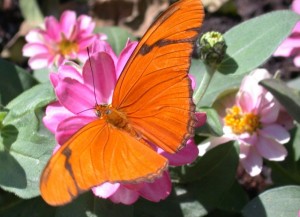 Healing Gardens at Stonehill Farm invites you to enjoy two acres of perennial gardens in a quiet wooded setting in St. Charles. A growing list of contemplative activities take place at Healing Gardens, including the following:
Healing Gardens at Stonehill Farm invites you to enjoy two acres of perennial gardens in a quiet wooded setting in St. Charles. A growing list of contemplative activities take place at Healing Gardens, including the following:
Yoga and/or Tai Chi in the Gardens, Sundays August 12, September 9, October 14
Meditation Hour at the Healing Gardens, August 12, 2:00-3:00pm. Join Bhante Bhaddiya, Buddhist monk from Sri Lanka for a one-hour event surrounded by the beautiful gardens. Bhante will teach a loving kindness meditation, walking meditation in the gardens and an inspirational Dhamma talk. Click here for more information.
Silent Saturday Mornings, August 18, September 20
Awakening in Nature Retreat, September 16
For more information and registration, please visit the Healing Gardens website.
One-Day Retreat with Father Carl Arico, September 18 in Kansas City
The theme of Father Arico’s retreat will be Is Your Yes a Yes, or a Maybe? The Power of Consenting. He will share the power of consent and the challenge of staying faithful. This is a unique opportunity to work with Fr. Carl, endearing, captivating and legendary in his wise, humorous and humble sharing. The retreat includes two periods of Centering Prayer and a Praying of the Scriptures.
Fr. Carl Arico is a founding member of Contemplative Outreach and a long-time friend of Father Thomas Keating. He is the author of A Taste of Silence and has traveled extensively in the United States and internationally to present workshops and retreats.
Further information and registration.
Seven-Day Intensive/Post-Intensive Retreat, October 7-13 in Dittmer, Missouri
Both tracks of this retreat at the Il Ritiro Retreat Center provide an opportunity to deepen the practice of Centering Prayer in an atmosphere of profound silence and community support. The Intensive Retreat has up to six thirty-minute Centering Prayer periods daily, along with the viewing of a selection of the Spiritual Journey Video Series by Fr. Thomas Keating. The Post Intensive Retreat will have up to eight thirty-minute periods of Centering Prayer daily, without any additional activity or input.
The retreat is sponsored by Contemplative Outreach of Central Missouri. Further information.
Midwest Wisdom Schools in Dubuque Iowa
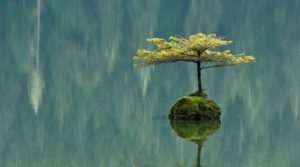 If you are longing to go deeper in your Centering Prayer practice, and perhaps yearning for a community of like-hearted seekers, you are invited to participate in one or more Wisdom Schools being offered at the Shalom Spirituality Center in Dubuque. The next session is:
If you are longing to go deeper in your Centering Prayer practice, and perhaps yearning for a community of like-hearted seekers, you are invited to participate in one or more Wisdom Schools being offered at the Shalom Spirituality Center in Dubuque. The next session is:
Oct 15-18, 2018 Placing Our Mind in Our Heart (Introductory Level, Part A)
The Wisdom schools are led by Beth O’Brien, Benedictine oblate and Founder of Contemplative Presence. A long-time Centering Prayer practitioner, Beth has been a direct student of Cynthia Bourgeault. In 2014, she received Cynthia’s blessing to teach and carry forth the Wisdom lineage. Beth led a one-day workshop on Mary Magdalene that was part of Contemplative Outreach – Chicago’s Living Wisdom Series in 2017. For more information & registration, please visit the Contemplative Presence website.
Spirit in the Wild Chapter 5 – First Night Freezing
by Phil Jackson
Last year, Phil Jackson (until 2016 the coordinator of Contemplative Outreach – Chicago) went on a two-week solo backpacking trip in the High Sierras of California. It was a spiritual journey as well as a physical challenge, and it became a surprisingly intense experience. Phil has now documented his journey in writing. If you want to start at the beginning, go to the March issue of Spirit Journal. Here is Chapter 5.
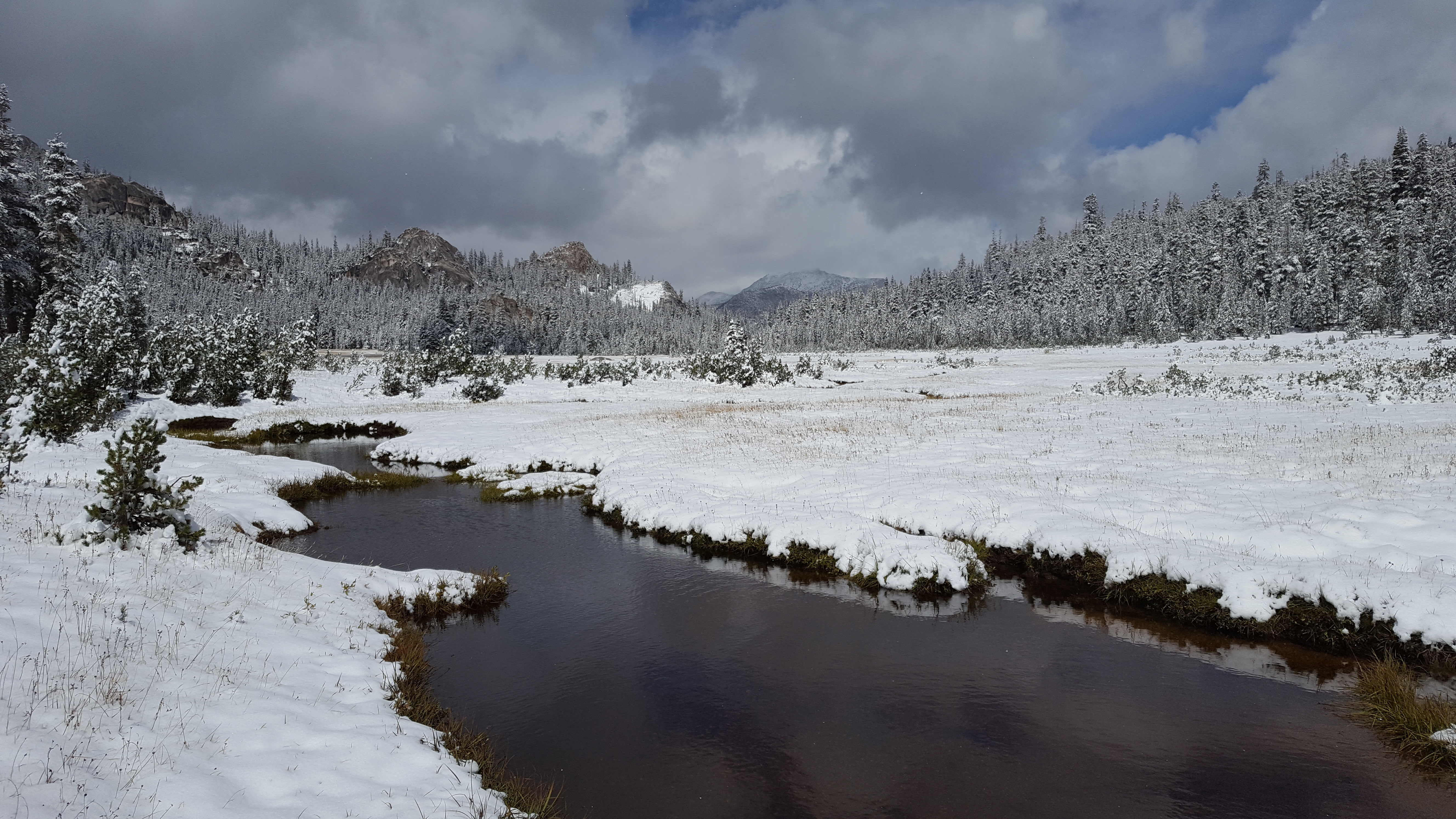
“You are not that important.” Richard Rohr, Adam’s Return.
The trip back, which will eventually bring me home, begins in Yosemite’s Tuolumne Meadows. It is the reverse of the route that I took in. Tuolumne is a pretty, open meadow — the serpentine Tuolumne river, a creek here, winds through. It is the site of two small historic cabins, bubbling springs that taste like seltzer water and a sign identifies it as the birthplace of the idea of the National Park. Here, John Muir and Century magazine editor Robert Underwood Johnson sat around a campfire discussing the grand idea of preserving pieces this country’s beautiful land for its people, an idea foreign to the world then. In Europe and elsewhere, the wealthy owned the most beautiful locations.
This particular part of Yosemite National Park is a busy tourist spot though, a two-lane automobile road passes with a dozen cars parked alongside it here. There’s a tent/building with wood walls and canvas top which serves as General store, take-out diner, and Post Office. Here I picked up my re-supply of food, which I’d packed and Mary Anne, my wife, had mailed. Knowing I had over-packed food so far, and wanting to save weight, I ate as much as I could, packed for what I thought would be one extra day, and gave away the rest to other hikers at the nearby picnic tables. Many of these hikers are on the Pacific Crest Trail, which merges with the John Muir Trail here. They’d have hiked over a thousand miles so far and have a thousand more ahead. I never made so many friends so fast by giving away a couple hard boiled eggs, fresh fruit, potatoes, and condensed camp food; I know it was worth its weight in gold to them. Many through-hikers seem to live off power bars and even candy. To me, every ounce counted with my bad knees, and I had put a lot of research into what nourishment pays off pound-wise, settling on real food to a great extent, they were ecstatic with this after their diet of processed packages. About half of my estimated 24-pound pack load now was due to food.
To pack extra light, I’d started by imagining the feeling many of us had as a child, lying on the grass staring up at the clouds. This is a common early mystical experience for many of us. It shows us that we need virtually nothing, and the less we have the more evident the connection between heaven and earth. This is very similar to how you feel when camping under the stars in the wild.
Insights
Light is to darkness what love is to fear. In the presence of one, the other disappears.
– Marianne Williamson
At the same time that we act and speak and think critically about what’s happening in the moment, we have to embody and walk with and towards how we want to live in contrast to that, how we want to live beyond this. We cannot call forth in the world something that we don’t embody.
– Krista Tippett
We are in desperate need of a new paradigm that inspires us to stop fighting against ourselves and each other. I would like to see a world in which people no longer think that the best alternative is to destroy whatever opposes them.
– Lama Tsultrim Allione
Peace is the result of retraining your mind to process life as it is, rather than as you think it should be.
– Wayne Dyer
Your Turn
Please write in to comment on or add to any of the items in this month’s newsletter. Let us know if you are aware of an upcoming event you think others should know about, or send us an inspirational quote you’d like to share, or information about a book, website, podcast, or video you recommend. You are invited to contribute by emailing the newsletter editor at news@centeringprayerchicago.org.
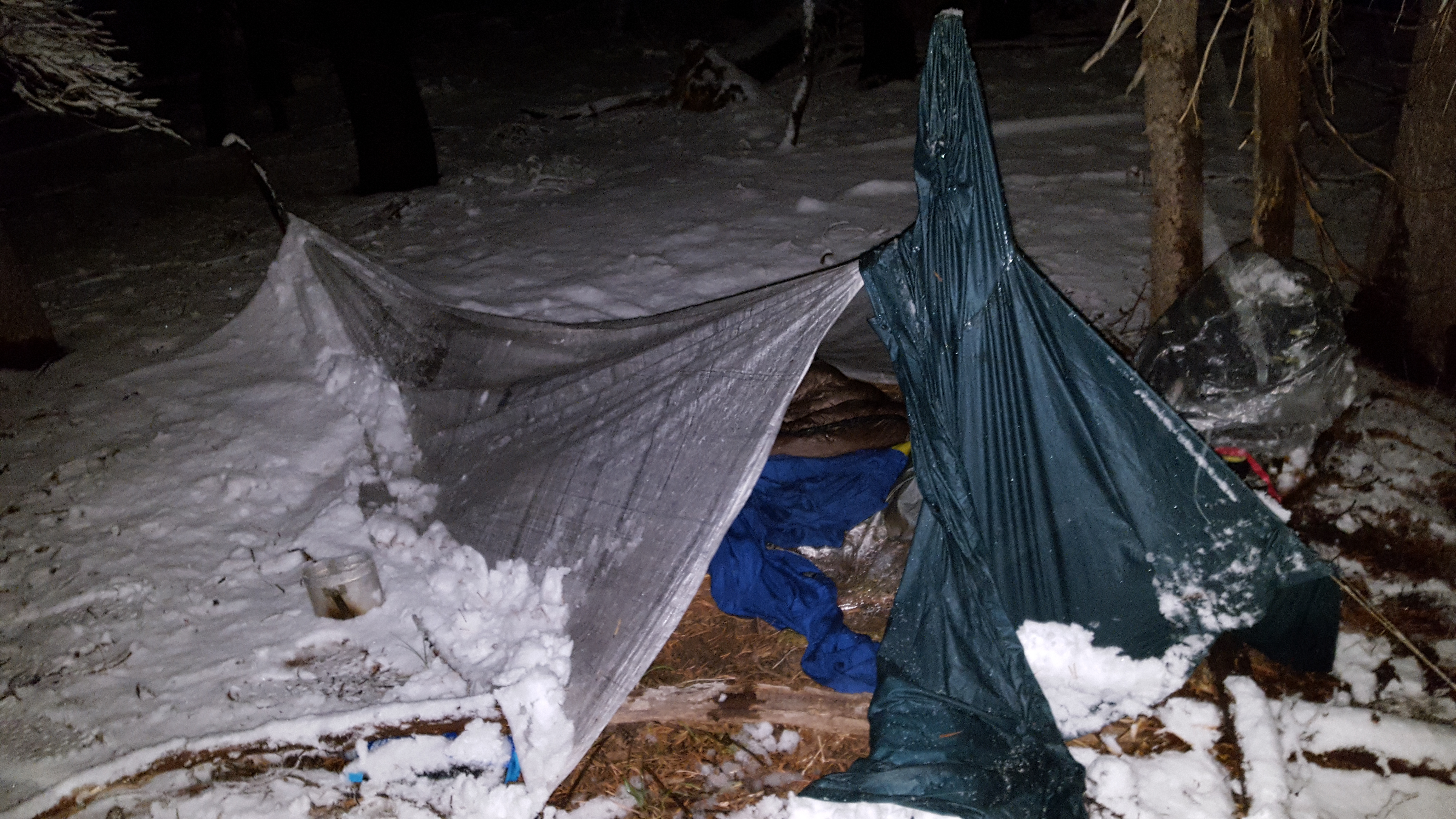
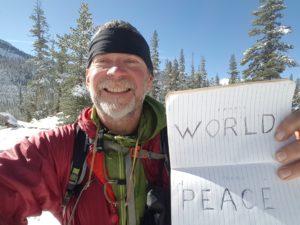 This happens to be about 1:20 PM on September 22 — Peace Day in Chicago. For 19 years I’ve belonged to the Peace School, a Meditation/Yoga/Martial Arts school that promotes serene peace demonstrations in Daley Plaza yearly. (Yes, if you notice the world today, we can get angry even talking about peace). The Peace School has obtained Peace Proclamations from every US state and many cities. I totally support their profession that each country and each state’s “mission be accomplished So, in solidarity with the Peace Day, I stop to meditate, wish “May peace be in the world”, and use the Mantra “Inhale, World; Exhale Peace” for twenty minutes.
This happens to be about 1:20 PM on September 22 — Peace Day in Chicago. For 19 years I’ve belonged to the Peace School, a Meditation/Yoga/Martial Arts school that promotes serene peace demonstrations in Daley Plaza yearly. (Yes, if you notice the world today, we can get angry even talking about peace). The Peace School has obtained Peace Proclamations from every US state and many cities. I totally support their profession that each country and each state’s “mission be accomplished So, in solidarity with the Peace Day, I stop to meditate, wish “May peace be in the world”, and use the Mantra “Inhale, World; Exhale Peace” for twenty minutes.